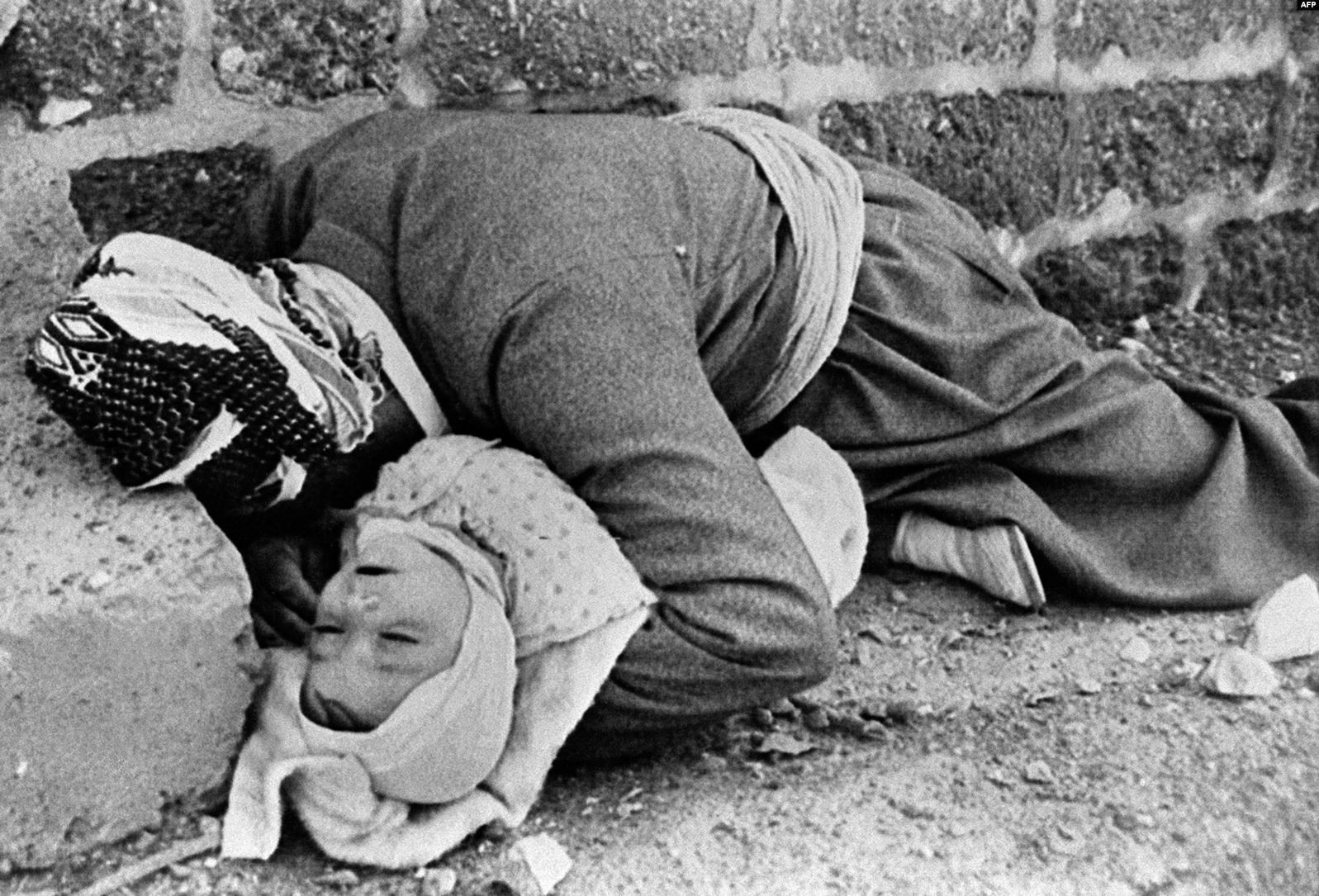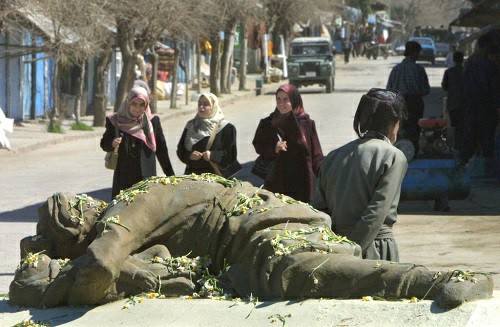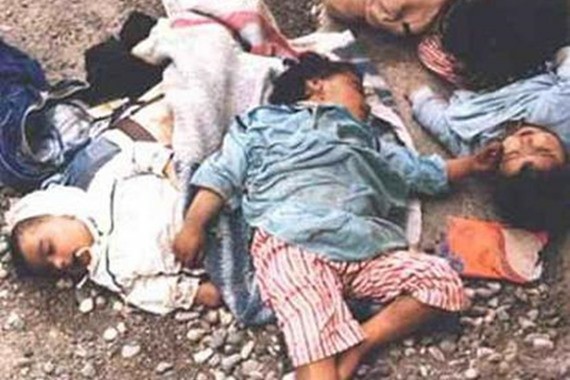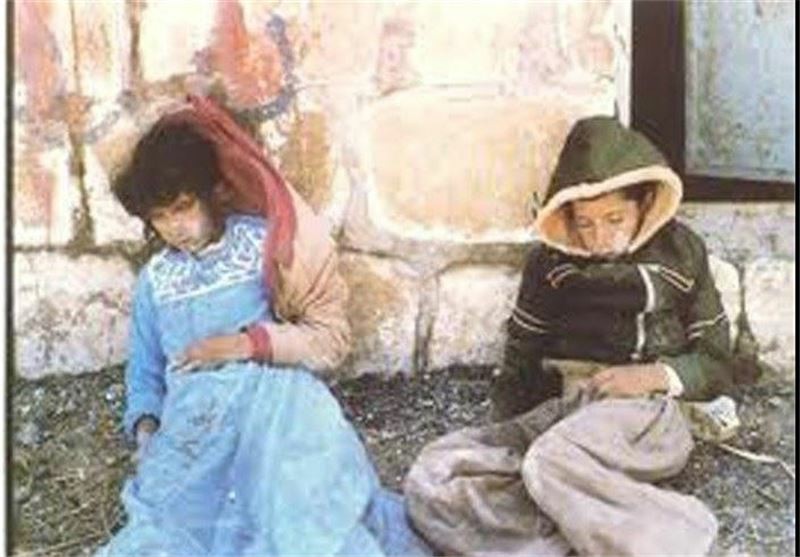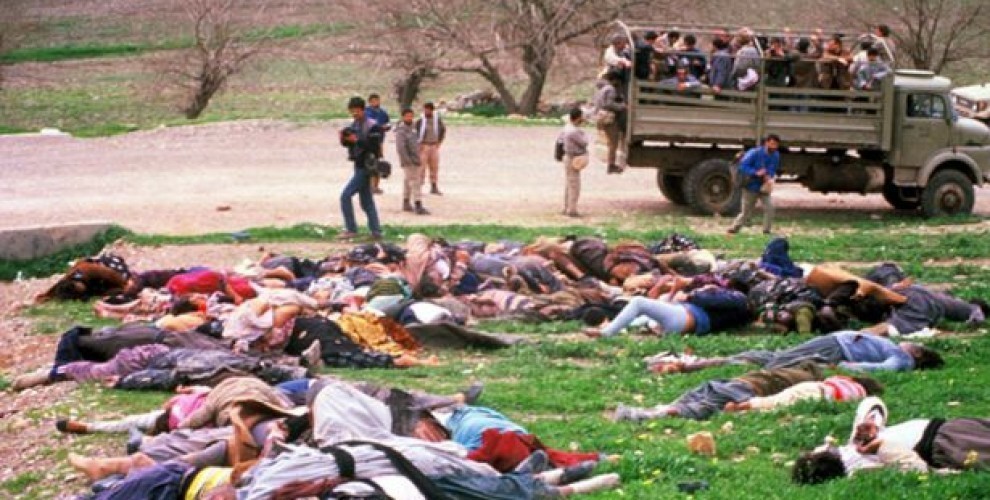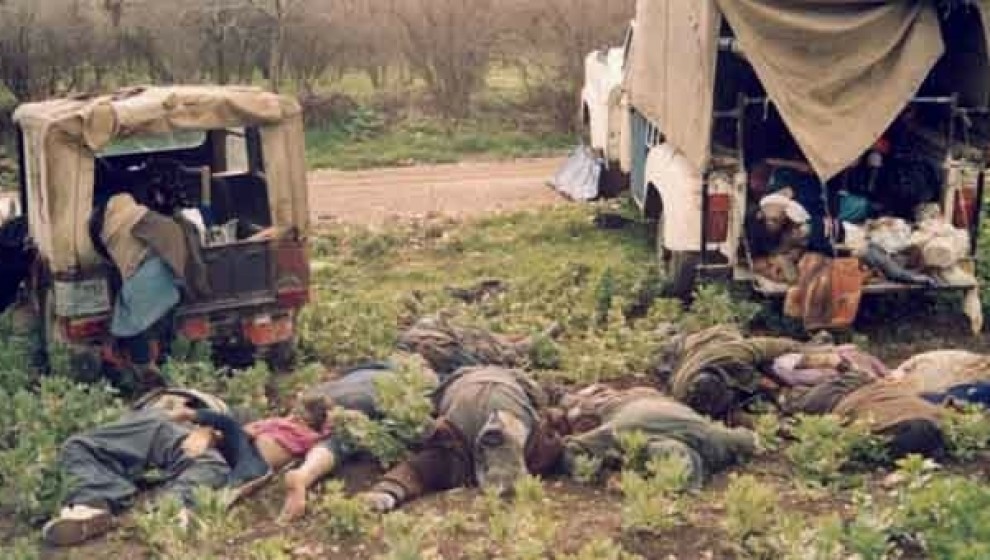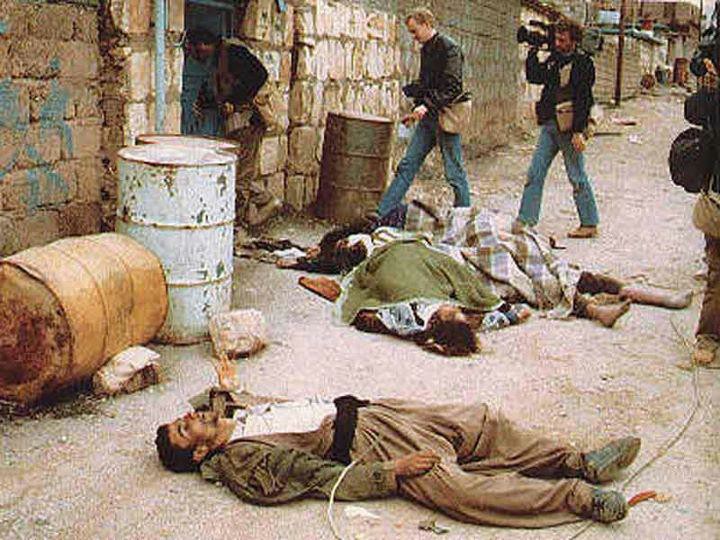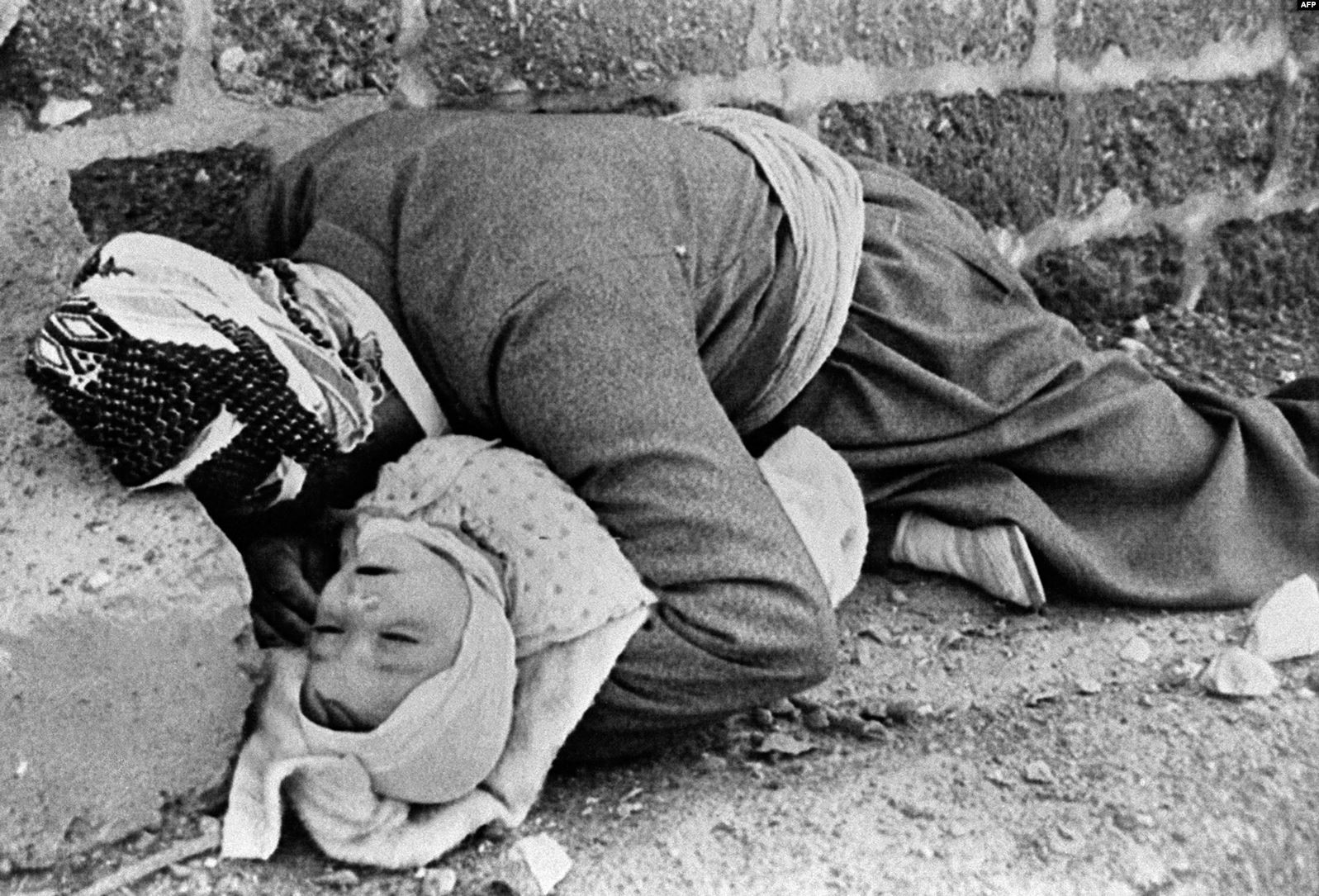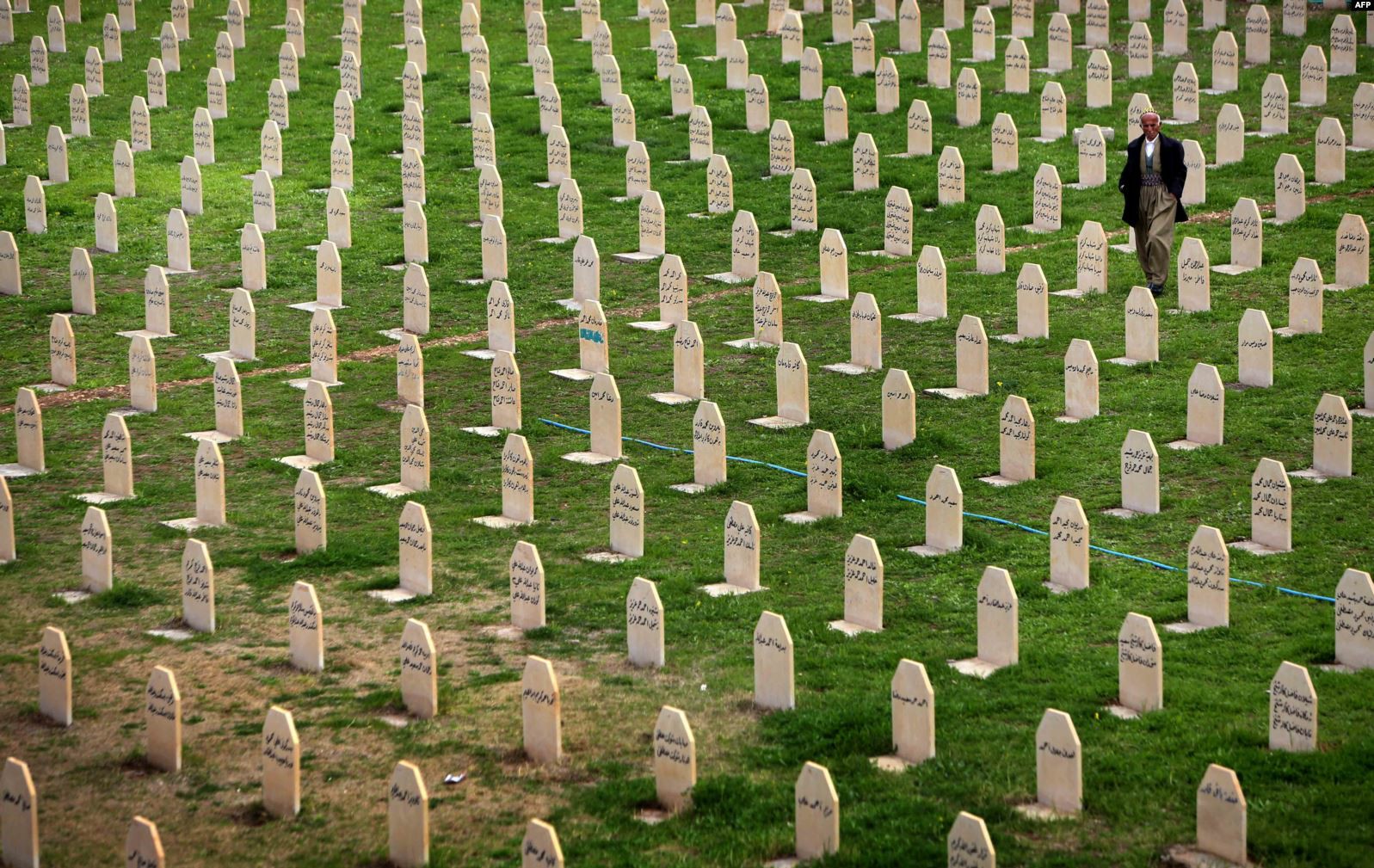Halabja...massacre whose effects still linger today.
32 years have passed on the Kurdish Halabja massacre whose tragedy and wounds are still present in the heart and conscience of the Kurdish people and the world at large, while the survivors continue to suffer from the effects of chemical and the failure of the Kurdistan Regional Authorities to support them.
The Kurdish city of Halabja which is about 240 km northeast of the Iraqi capital, Baghdad, and 11 km from the Iranian border was subjected to artillery bombardment during March 14 and 15, 1988. This appeared to be preparing for another scenario.
The sky was full of poison on March 16
It was cloudy, as if the sun felt awfully about what was going to happen. I decided not to be a witness to the city slumber. Calm prevailed after continuous bombardment for two consecutive days.
At 11:30 p.m., 50 Iraqi warplanes flew over Halabja the city of 80,000 people, and bombarded it for about 5 continuous hours.
After the shelling, the city plunged into a long slumber. The traces of life were absent, according to those who lived in those days.
In just a few hours, more than 5,000 civilians, including children, women and the elderly, lost their lives, and between 7,000 to 10,000 others were injured.
The chemical attack on Halabja was the worst massacre in the country, with bodies lying everywhere.
Experts confirmed from the collected samples from the city and later, the victims that three types of toxic gases were used to bomb the city (cyanide, toxic mustard gas, and sarin).
After many years, the Amnesty International has collected the names of more than 170.000 people who disappeared in the city of Halabja due to the chemical shelling and Anfal. Hundreds are still missing according to the Amnesty official webpage.
"During the chemical attacks, we were by the Sirwan River, there was no way out. Suddenly we saw the planes dropping bombs, then it smelled very bad; It smelled like a burnt tire, not knowing it smelled like chemical." Aziz Mohammed Fatah, a witnesses who was injured in the chemical bombing of Halabja said.
Fatah pointed out that he inhaled the poison gas. He recalled what happened that day, and said: "Some people came and carried us in a car towards the Iranian cities. We asked them where we were? They told us this is Kermanshah Hospital. From there we went to Tehran.
He said they were transferred to Behairka area in Hewler, where they lived under nylon tents. Later he returned to Halabja.
"On the day of the massacre, the Peshmerga closed the way; we couldn't get out, so we went back to our homes. It was raining and we had our share of pain," he said.
What is the role of the Kurdistan Democratic Party ( KDP ) and the Patriotic Union of Kurdistan ( PUK ) in the Halabja massacre?
Political analysts believe that when Kurdish parties act in accordance with their partisan interests, the result is inevitably what happened in Halabja. Some Kurdish parties victimized Halabja city for their political interests and exploited them after the massacre.
During the Iraqi-Iranian war in 1980 and ended in August 1988, the two Kurdish parties put the Bashor Kurdistan (southern Kurdistan) as parties to the war rather than protecting their peoples. Therefore the Kurdish territory in Iraq and Iran became an open battleground.
The KDP sided with the Iraqi Baathist regime, while the PUK sided with the Iranian regime, bringing destruction and massacres to Kurdish towns.
The Halabja massacre is one of the bloodiest massacres in the history of the Kurdish people and the region. Observers say it was a physical extermination of the Kurdish people, a tragedy that the Kurdish people remember every year and cannot be forgotten.
Repeated massacres…
The Kurdish people since the beginning of the time, he has been subjected to many massacres and genocides at the hands of the authoritarian regimes which occupy Kurdistan. From Dersam massacre in 1938 to Halabja in 1988 to Shengal massacres on the hands of ISIS in 2014 and Kobane in 2015. The last episodes of these massacres is being committed by Turkey in Afrin, Seri Kania and Gire Spi in 2018.
Who is behind the Halabja massacre?
Several parties and figures stood directly behind these massacres and were the main cause of this heinous crime.
The Iraqi Baathist regime committed Halabja masscre under the leadership of its passed away president, Saddam Hussein who gave orders to his cousin, Ali Hassan Al Majjeed, the secretary of the North Office for the Baath Party at that time, to shell Halabja city. He was later called, the chemical Ali.
Trials..
Years after the Halabja massacre, her case was opened following the arrest of Saddam Hussein in December 2003 after the US invasion of Iraq.
The Iraqi Special Tribunal tried Saddam Hussein and six other defendants on August 21, 2006 in connection with Anfal massacres. In December of the same year, Saddam Hussein was tried for Halabja massacre against the Kurds, and his trial continued till his execution on 30 December 2006.
On 23 June 2007, Ali Hassan al-Majid "Chemical Ali" and two other defendants, Sultan Hashim Ahmed and Hussein Rashid Mohammed, were convicted of genocide and sentenced to death. Ali al-Chemical was executed in January 2010 by the municipality of Halabja.
The International Criminal Court in The Hague, The Netherlands, also prosecuted the businessman, Frans Van, who bought the chemicals from the world market and sold them to the Iraqi Baath regime for 15 years, Dutch news agencies confirmed.
The recognition of the genocide
Halabja massacre did not leave the world the opportunity to distort the laws and their provisions, because this massacre agreed with the standards of the 1948 Genocide Convention in the definition of genocide.
The Dutch court considered the Halabja massacre to meet the requirement of the genocide conventions as a legal ethnic group.
On 5 December 2012, the Swedish Parliament recognized the Halabja massacre as genocide against the Kurds, as well as other courts.
The remains of the massacre.
The panic status didn’t fade until three decades after the massacre because the remnants of mustard gas still exist, affecting agriculture and nature in general.
Unlike sarin, the nerve gas that evaporates, mustard gas is heavier in the air, falling to the ground and forming pockets that last.
According to observers, Halabja continues to suffer from the effects of the chemical bombing. Many embryos are born with physical disabilities.
"After the effect of the chemical, my sight weakened, and several diseases appeared in my chest. 10 years ago I was able to provide medicines for my wife, who had about six surgeries, without any support and assistance," Aziz Mohammed Fatah said.
"We, as the wounded of the Anfal operation, call on the regional government to secure hospitals, recruit better doctors and provide medicines," he said.
But this KDP-controlled government does not care about the situation of halabja wounded.
"For nearly 32 years we have been living this harsh life. Our situation is very bad. Since that day I have not been seeing, and I have suffered from significant pain and constant shortness of breath," Taban Ali Faraj said.
"For 10 years I have been receiving doses of medicine. The Kurdistan Regional Government has cut it off for three years. We demand a specialist to better treat the wounded and the injured," she said.
Images from Halabja are timeless in mind
Some images got stuck in the minds od those who saw them for the first time, and became unable to forget the massacre as if they had lived it.
One of the most prominent pictures, Omar Khawar hugging his infant and his wife Amal lying on him to protect him from the bombing. This picture represented the tragedy and its horrors. A memorial was erected for Omar Khawar.
The world, especially the Kurdish people stand every year at 11:30 p.m. on March 16 in memory of the victims of the Halabja massacre.
A.J
ANHA
<iframe width="560" height="315" src="https://www.youtube.com/embed/hWixyQ1a1u8" frameborder="0" allow="accelerometer; autoplay; encrypted-media; gyroscope; picture-in-picture" allowfullscreen></iframe>

